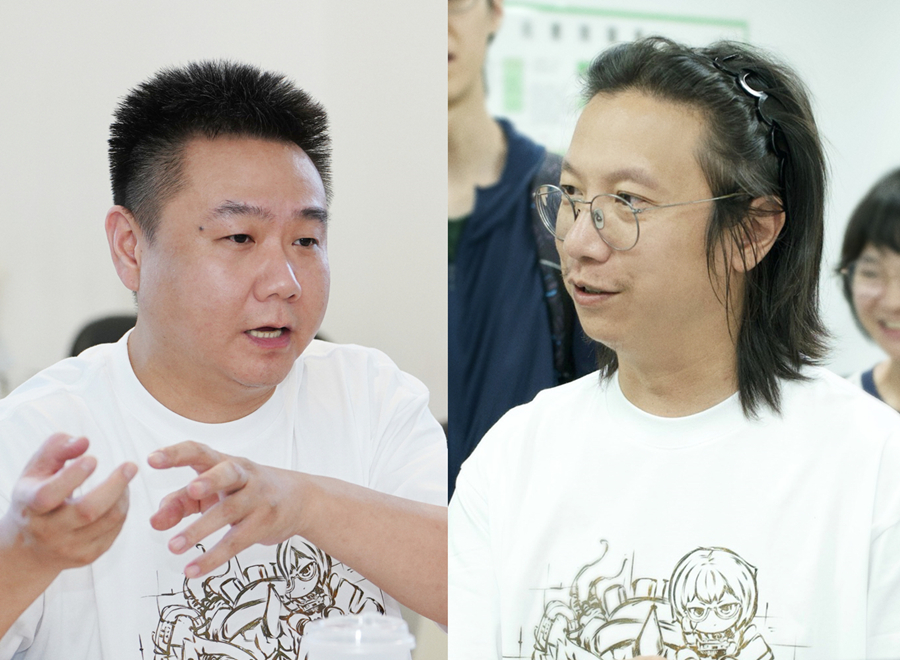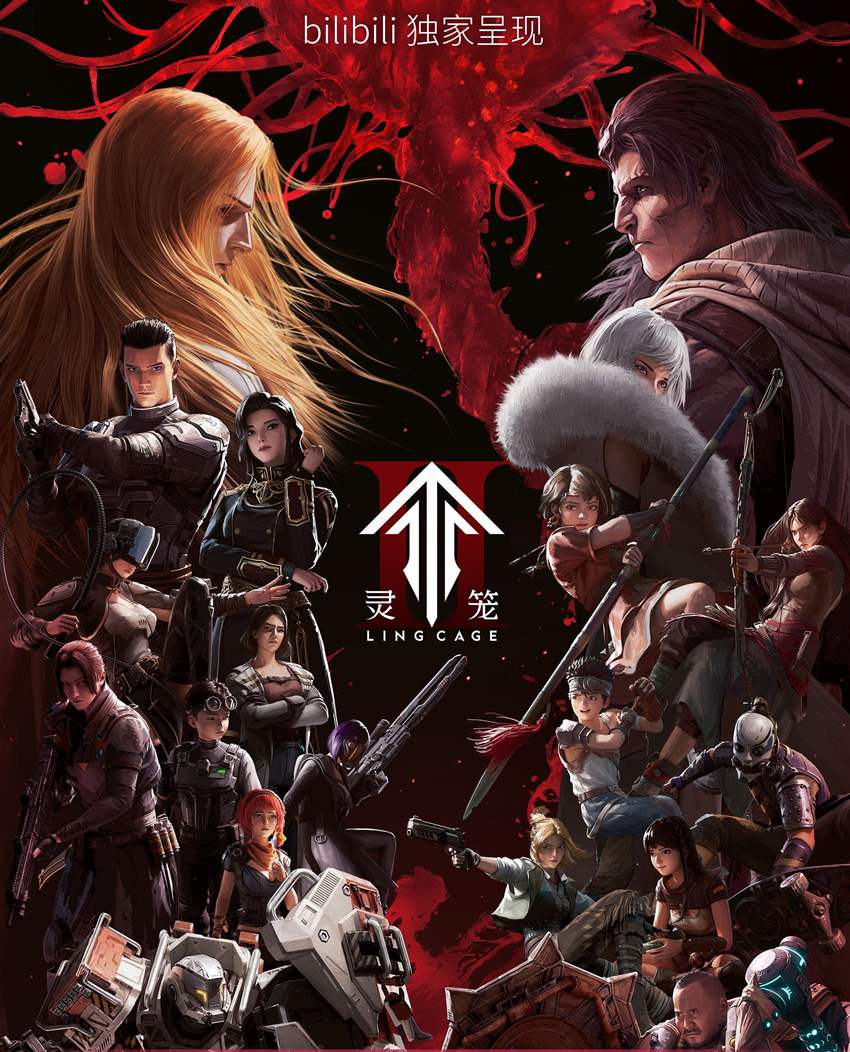The Chinese sci-fi animation series "Ling Cage" has just wrapped up a successful second season that drew more than 330 million views. China.org.cn sat down with the creators to talk about the creative pressures of season two, production challenges, and how scientific research is shaping their sci-fi worldbuilding.

Dong Xiangbo (L), director of "Ling Cage," and Chen Wei, the show's producer. [Photo courtesy of YHKT Entertainment]
Dong Xiangbo, director of "Ling Cage" and co-founder of YHKT Entertainment, said he felt anxious after the first season's success in 2019. The debut season drew more than 670 million views on Bilibili and earned a 9.6/10 rating, establishing it as a leading Chinese animation on the platform. Dong said he worried audiences might reject new content as expectations rose alongside technological advances and AI developments.
"I'm under tremendous pressure — not from audiences, but from our own commitment to perfecting the content," he explained.
Dong said he was pleased their efforts paid off. The 12-episode "Ling Cage II" has gained over 11 million followers and a 9.8 rating on Bilibili since its May 23 debut, with new episodes released weekly. It also holds an 8.9/10 score on Douban based on more than 41,000 user reviews
"Ling Cage" depicts a post-apocalyptic world where survivors struggle to live on the floating "Lighthouse" and the monster-infested surface ruled by the "Mana Ecosystem." The second season introduces new locations and explores themes of trust and survival ethics as humanity attempts to rebuild civilization after a human-caused ecological disaster.
Chen Wei, chief producer of "Ling Cage" and co-founder of YHKT Entertainment, said the biggest regret of the first season was that technical and budget constraints kept the visuals from meeting the team's envisioned standard. For the second season, they invested time in technical upgrades to enhance the visuals.
"Now we can more easily create grand yet detailed landscapes. Enriching the visuals makes scenes feel more vivid and brings them closer to film quality," Chen said
Dong said "Ling Cage" began with veteran animators, each with more than a decade of experience, who wanted to create original content. Their initial concept, "Moon Prisoners," took inspiration from the moon's dark side before developing into "Ling Cage" and its post-apocalyptic setting.
"We are a group of people who love sci-fi and fantasy. And we hoped to create something realistic, for an older, more mature audience — something we would also enjoy watching and find deeply engaging," Chen said. "So once we had built up some technical and production experience, creative concepts, and even some funding, we decided it was time to do something."
Dong said the show's characters reveal their true nature through their choices, especially when facing threats, temptations or extreme adversity. Animation allows creators to intensify these pressures and force decisions that show courage or fear, he noted. "One's choices are very important," Dong said.
The director explained that the series uses a specialized scriptwriting team with members who have expertise in different fields, including history, military strategy, and modern warfare. He acknowledged the production cycle is long but explained that this stems from the series' creative process, in which scriptwriting and post-production happen in sequence rather than simultaneously
"Like preparing a meal, you have to shop, wash and chop ingredients before you start cooking. Similarly, while writers develop the script, the production team prepares assets. Once the script is finalized, these elements merge seamlessly — ensuring a smooth workflow," Dong said.
Chen said the second season required extensive resources. The team created more than 10,000 key frames, designed 300 to 400 characters, and produced about 4,800 special effects shots.

A poster for "Ling Cage II." [Photo courtesy of YHKT Entertainment]
The team recently visited the Chinese Academy of Sciences to research advanced multimodal cross-scale imaging technology and separately consulted age-reversal scientists about concepts in the second series. The exchanges have inspired ideas for upcoming seasons.
"The scientists supported incorporating cutting-edge research into this sci-fi series to authentically highlight China's innovations," he said.
Though an original Chinese animation, the story features a diverse cast of characters from different ethnicities. Chinese cultural elements appear throughout the series, including Longgu village's terraced fields, traditional mahjong and street vendors bargaining over prices. "We naturally integrated these authentic slices of Chinese life into the worldbuilding," Dong explained.
Dong said the team appreciates the positive audience response and confirmed that seasons three and four are in development. "Not as slow as before, like a four-year wait, but we want to maintain quality," Dong said. "We want to make the stories stronger and better able to show the struggle in adversity, bringing strength to those moving forward."





 Share:
Share: 






 京公网安备
11010802027341号
京公网安备
11010802027341号